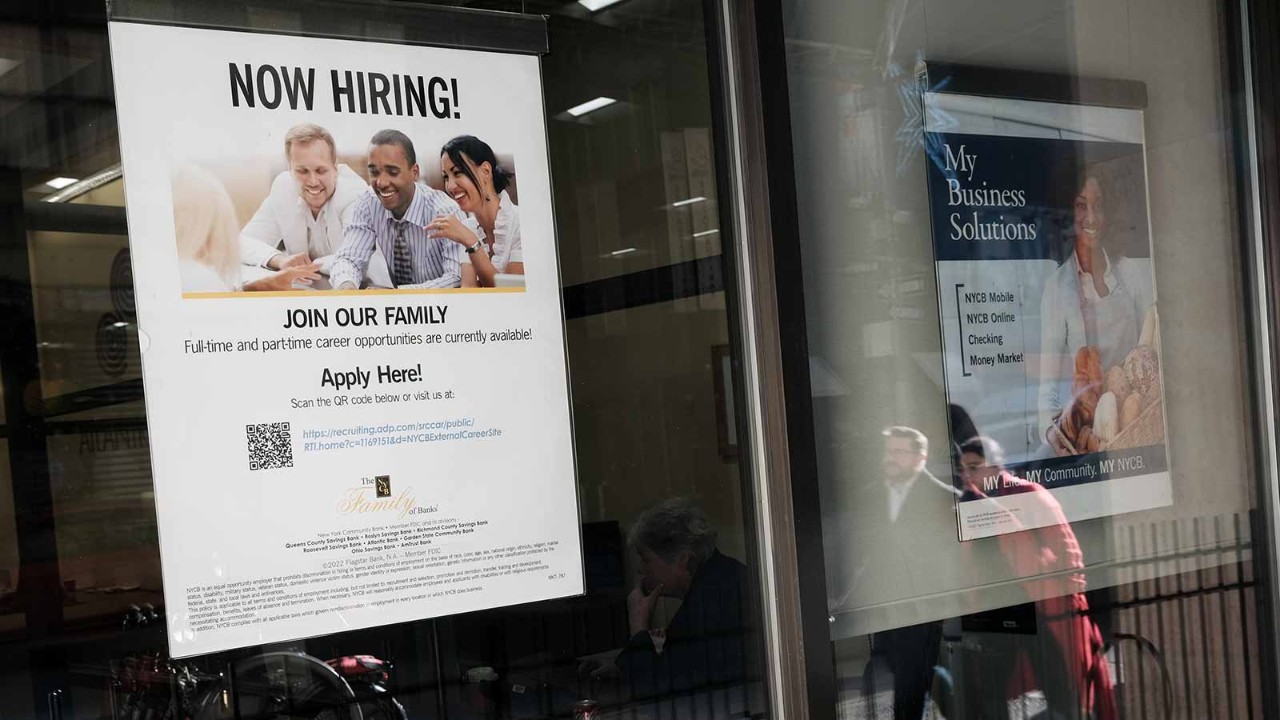
It wasn’t supposed to go this way. The Federal Reserve raised rates at the fastest pace since the 1980s last year. One of its main goals in doing so was to cool demand for labour and slow wage growth to bring inflation back to its 2% target. So far, the plan has not been working.
The latest jobs data has been red hot. Unemployment in January fell to its lowest level since 1969. Over the month, the US economy generated a net 517,000 jobs – more than twice the pace economists had been expecting.
An overheated jobs market – not weak demand – has become a main headwind for companies
Other recent labour market indicators have painted a similar picture. As of December, US companies had 11 million job openings – or 1.9 for each unemployed person – close to a record high. And strong demand for labour continues to fuel high wage growth. The three-month moving average of median wage growth was 6.1% in January, compared to a range between 2% to 4% since 2010 and the start of 2022.
Cause for concern
The mysterious strength of the US labour market is a key concern for CFOs in several ways. Most directly, with labour costs accounting for as much as 70% of total business expenses, rising compensation has the potential to erode profit margins for companies that are unable to fully pass on higher costs to customers.
Emboldened workers are also more likely to quit jobs in favour of better-paid alternatives. With close to 3% of staff walking out each month – around a third higher than the long-run average – companies are forced to spend more resources and time training up new recruits. And this is even when appropriately skilled workers are available at all. One notable complaint in the most recent ISM survey of service businesses was: ‘Unable to hire qualified labour – supply is thin.’
This combination already appears to be taking a toll on profits. The recent fourth-quarter earnings season pointed to a decline in the net profit margin – excluding energy and financials – to around 10%, from an all-time high above 12% in late 2021. Overall earnings per share in the fourth quarter were down around 5%, the first annual fall since the pandemic.
Spending binge
And the decline is clearly not due to lower spending by consumers. On the contrary, in January retail sales rose 3% on the month – one of the biggest increases over the past 20 years. This combination suggests that an overheated jobs market – not weak demand – has become a main headwind for companies.
The overheating jobs market also poses a less direct threat to CFOs – that of ever higher US rates. At the start of February, investors had become convinced that the Federal Reserve had the inflation problem licked. Fed funds futures were indicating that investors believed that the Fed was almost finished tightening – implying a peak in rates of around 4.8%, with just one more 25 basis-points increase in rates likely. As of the end of the month, markets had come to expect a peak closer to 5.4% – suggesting the Fed had far more work to do in curbing inflation.
This has the potential to further increase the cost of capital for businesses, adding to an already steep rise in borrowing costs. Since the start of 2021, the yield on bonds issued by companies with a triple-B credit rating – an investment grade rating denoting a low risk of default – has climbed from just over 2% to 5.8%.
The longer the labour market strength persists, the greater the chances of an economic hard landing
A second concern is that ongoing rate rises would unsettle equities – making it harder to raise funds through the stock market. Global stocks got off to a good start in 2023, rising around 7% in January after an 18.4% fall in the MSCI All Country World Index in 2022. Much of the rally in early 2023, however, was based on the hopes of an end to Fed rate hikes. With this now in question, so is the recovery in stocks.
It is also clear that the Fed won’t stop raising rates until it has more compelling evidence that the labour market is cooling. Various top Fed officials have made it clear that it will not be possible to hit their inflation target unless demand for labour moderates.
‘With the strength in the labour market, clearly there are risks that inflation stays higher for longer than expected, or that we might need to raise rates higher’ than current forecasts imply, New York Fed president John Williams told reporters in New York on Valentine’s Day.
Unclear reasons
Why previous rate hikes have not yet succeeded in moderating demand for labour remains unclear. Demand and supply for labour likely both play a part. On the demand side, generous government support during the pandemic helped Americans build up stockpiles of cash that are still being spent. According to the Fed, US households accumulated $2.3 trillion more savings than might have been anticipated due to government support and an inability to spend during lockdowns.
Even now, about $1.2 trillion of this remains – adding to demand for goods and services that companies are struggling to meet. At the same time, the pandemic reduced the supply of labour – as many older Americans left the workforce permanently for retirement. An ageing population also means fewer eligible workers, with the percent of the US population between 15 and 64 years old down from 67.3% in 2007 to 64.9% in 2021. Finally, the US has been experiencing its slowest population growth since the 1790s.
What next?
Such trends go some way to explaining the enigma of higher rates and strong employment. What comes next is harder to predict. But the longer labour market strength persists, the greater are the chances of an economic hard landing – as the Fed is pushed to raise rates to highly restrictive levels possibly just at the time Americans run through their stockpile of savings.
While the Fed has a dual mandate – with goals to achieve both price stability and maximum employment – few doubt that the top officials will prioritise bringing inflation lower even at the risk of a recession. That gives company executives an extra reason to keep a close eye on the nation’s jobs data along with their own employment costs.



